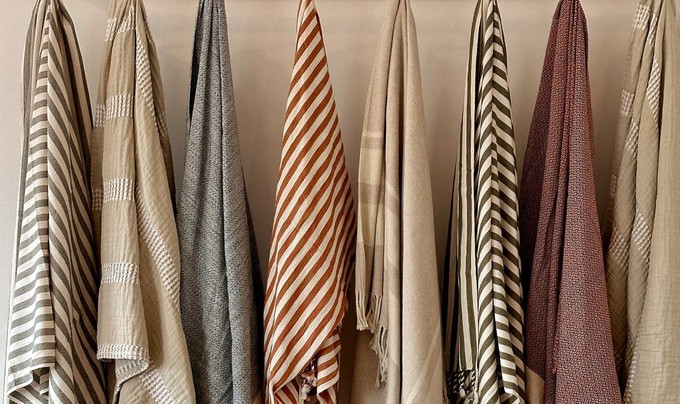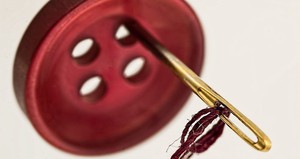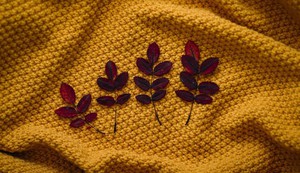- Clothes
- Bags
- Accessories
-
Inspiration
- Shoes
What New Sustainable Fabrics & Materials Are Designers Using?

Pick up a fast fashion garment, and we bet the label will either read ‘cotton’ (the cheap kind that’s loaded with pesticides) or ‘polyester’!
Ethical companies, on the contrary, have been using some of the most eco-friendly fabrics for years. At the same time, more and more designers have been getting creative with new sustainable fabrics.
Here are some of the ones that blew our minds when we first heard of them.
13 new sustainable fabrics and materials to make fashion more eco-friendly

From mushrooms to milk, it’s crazy that some of these resources and materials can be turned into wearable fabrics!
1. Fabrics made from textile waste
New sustainable fabrics like Circulose and NuCycl are created from pre- or post-consumer textile waste (like production scraps and worn-out jeans), cotton in particular.
This obviously helps reduce waste and results in lower carbon emissions than creating new viscose fibres from scratch.
This textile waste is also purified with water-based chemical processes to get rid of dyes and contaminants.
2. Kintra
This resourceful company produces bio-synthetic yarns that perform like polyester and nylon but degrade like natural fibres.
Because they rely on corn- or wheat-derived sugar, they’re biodegradable, renewable, and circular. Nice one!
3. Clarus
This is a more sustainable alternative to polluting synthetic fabrics.
Clarus is a technology that turns natural fibres (like cotton or wool) into highly performing fabrics that are still biodegradable.
4. Econyl
What if, as well as removing plastic and fishing nets from the ocean, we could turn them into something useful?
Well, now we can actually wear them, too!
This new sustainable fabric consists of recycled or regenerated nylon, perfect for swimwear.
5. Fruit-based vegan leather
Most vegan leather isn’t actually that eco-friendly because it’s made with fossil fuel-derived plastic.
Some more sustainable fruit-based alternatives are:
- Piñatex (pineapple leather)
- Apple Skin and other apple-waste leathers
- Vegea, which uses wine industry grape waste
While these new sustainable fabrics are definitely a step forward, we hope their producers will find a way of removing their PU and plastic coating (at the moment, fruit-based leather is not entirely biodegradable).
6. Mylo - mushroom leather
You aren’t tripping! Made from mycelium, mushroom leather isn’t petroleum-derived and is infinitely renewable.
However, it still relies on some plastic coating that isn’t biodegradable
7. Scoby - kombucha leather
Short for ‘symbiotic culture of bacteria and yeast’, this is yet another innovative leather alternative. Luckily, this time it’s 100% biodegradable, too.
8. Desserto - cactus leather
Relying on such a resilient and renewable plant, cactus leather can be grown without pesticides or irrigation systems.
It’s just a shame that, like most vegan leathers, it’s not biodegradable just yet.
9. VitroLabs - lab-grown leather
Compostable and biodegradable, this cell-cultivated alternative is just like genuine leather… except that cows don’t need to die for it!
10. Woocoa - vegan wool
Winner of the PETA & Stella McCartney BioDesign Challenge, this more ethical ‘wool’ is created from coconut and hemp, using oyster mushroom enzymes.

11. Qmilch
This new sustainable fabric is made from… yep, you’ve guessed it: milk!
Or, better, a milk protein that’s a by-product of the food industry.
While it obviously isn’t vegan, Qmilch is biodegradable and energy-efficient.
12. Mirum
Made with plant matter, this circular, climate-friendly, and plastic-free material is an interesting eco-friendly alternative for footwear in particular.
Its endless recyclability makes up for the fact that it’s not (currently) biodegradable.
13. Carbon-negative fabrics
New sustainable fabrics like AirCarbon and LanzaTech are created by replicating a natural process: organisms converting carbon emissions into molecules (= less CO2!).
The latter are then melted down and turned into yarn.
Isn’t it inspiring to see how creative some brands and researchers have been getting to help our planet?
Be part of the change! Keep up to date with sustainable fashion, and start receiving our tips and inspiration to make more ethical clothing choices.
Share our story
Related articles
Econyl Fabric: Is Swimwear Made from Fishing Nets Green?
Produced using plastic waste instead of fossil fuels, recycled nylon has been revolutionising swimwear. But is Econyl fabric as sustainable as it sounds?
What Is Circular Fashion? Don’t Be a Fast Fashion Square!
Instead of going round in circles by overproducing garments without worrying about the consequences, could a circular fashion model be a solution? Let’s see.
What Are the Most Sustainable Fabrics? Oh, Sew Eco-Friendly!
‘Natural’ doesn’t always = ‘eco-friendly’! So, here’s a simple list of the most sustainable fabrics, why they’re good for the planet, and how to find them.
Project Cece is a platform that collects ethical fashion from vetted brands and shops in one place. Browse ethical fashion for women and men and find items that fit your style, budget and values!



